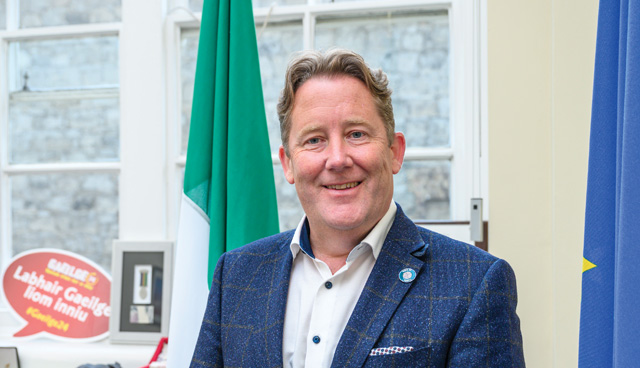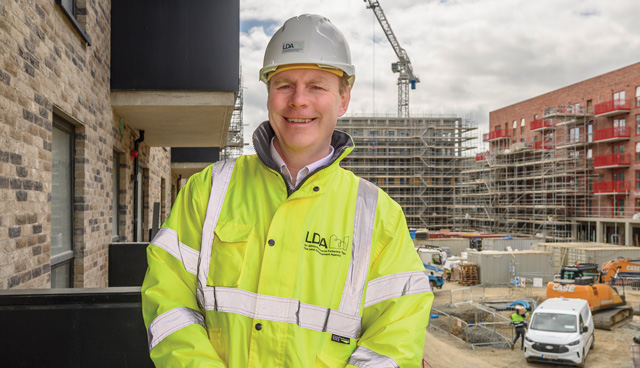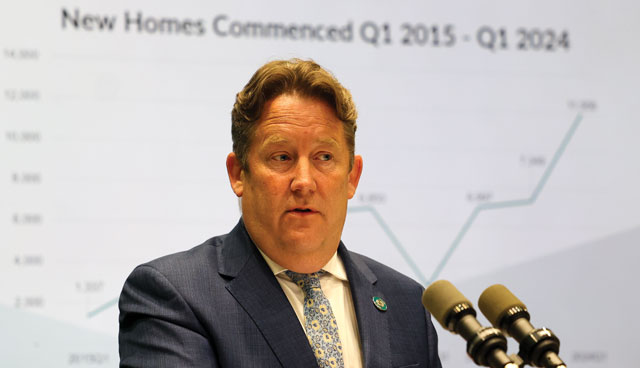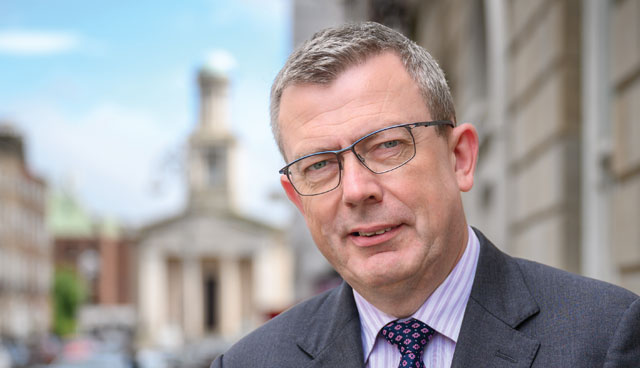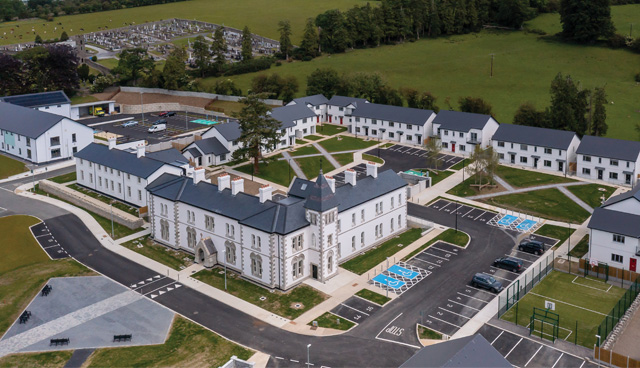
A co-operative housing model fit for Ireland
3rd July 2024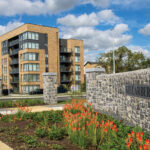
Continued expansion of AHB sector in 2023
3rd July 2024Homelessness: An all-island challenge
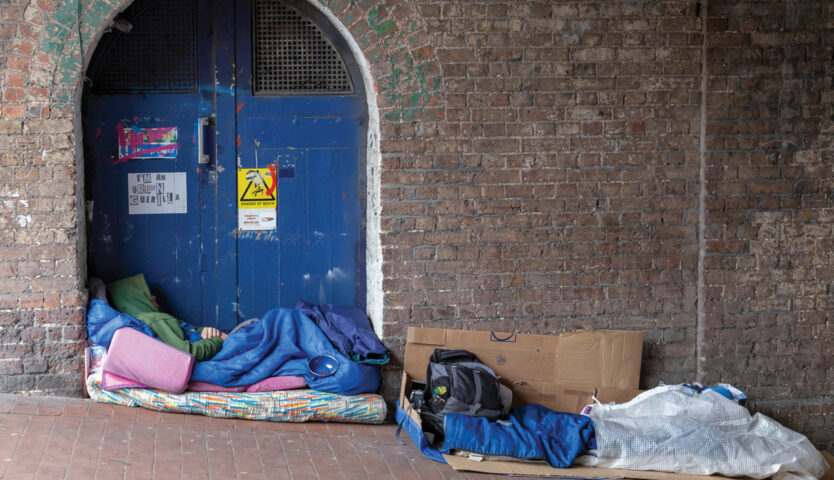
Despite efforts to eradicate homelessness across the island of Ireland, figures continue to increase both north and south.
Homelessness in Ireland, north and south, is escalating, as evidenced by recent statistics and surveys. In the Republic, the number of people in homelessness has surged by 14 per cent from April 2023 to 2024, with a considerable proportion of the homeless population concentrated in Dublin. The number of children in emergency accommodation has increased by 45 per cent since January 2020.
In the North, despite a temporary decline, the number of households presenting as homeless has risen by 7 per cent when compared with 2021/2022 to 2023/2024; with a figure demonstrating increases from the commencement of the pandemic. The acceptance rate for full duty applicant (FDA) status, which obliges the Housing Executive to provide accommodation, has increased by 20 per cent when compared with figures between 2022/23 and 2023/24.
Meanwhile, hidden homelessness remains a challenge – both north and south – according to the Simon Communities of Ireland and Simon Community NI.
Hidden homelessness can be defined as including people who are not engaging with the statutory bodies and are therefore absent from the official figures.
A recent all-island poll undertaken by Lucid Talks and Ireland Thinks, jointly commissioned by the Simon Communities of Ireland and Simon Community NI found that approximately 32,500 households across the island (24,000 in the Republic and 8,500 in the North) are experiencing hidden homelessness.
Due to the multiple discrepancies in the metrics used for recording homelessness north and south, it is impossible to determine an accurate comparison of the frequency in each jurisdiction.
Department of Housing, Local Government and Heritage figures
According to the latest available Department of Housing, Local Government and Heritage (DHLGH) figures, in April 2024, 9,803 adults and 4,206 children were accessing emergency accommodation; a 14 per cent rise from April 2023, when the total number of homeless people in the State exceeded 12,259.
Of those counted as homeless in the April 2024 statistics, 61 per cent were male and 39 per cent were female. Furthermore, 72 per cent were based in the Dublin region.
This represents a significant increase from the Census figures in 2022, when 10,300 people were counted as homeless on census night.
Reflecting on the proportion of adults in emergency accommodation in April 2024 by citizenship and region, 55 per cent were Irish, while 23 per cent had EEA or UK citizenship, and 22 per cent had non-EEA citizenship.
The April 2024 figures from DHLGH show that there has been an increase of homelessness by 36 per cent since January 2020. Additionally, there has been an increase of 45 per cent in children accessing emergency accommodation since 2020.
Regarding the rough sleeper count, the official winter count of persons in the Dublin region was carried out over the week of 6 to 12 November 2023. A total of 118 unique individuals were confirmed as rough sleeping across the Dublin region over the week of the count. This figure represents an increase of 35 persons (42 per cent) on the spring 2023 count carried out the week of 6 to 12 April 2023.
Department for Communities figures
Meanwhile, in the North, the number of new social homes being built is set to drop to the lowest level since 2009, after the Department’s reduced capital budget indicated that only 400 units would commence in 2024/25; an 80 per cent cut to the initial target of 2,050. This stands in stark contrast to the 1,506 new build units commenced during 2023/24 and 1,956 in 2022/2023.
The number of people presenting as homeless in the North is calculated through the Department’s figures of the population presenting as homeless to the Housing Executive (HE). A homelessness ‘presenter’ is a household that has applied to undergo a homelessness assessment by the Housing Executive. Furthermore, the number of people included within each individual ‘household’ that presents as homeless is undetermined.
From 2023 to 2024, 16,943 households presented as homeless, of which 62 per cent were accepted as full duty applicants (10,518 households). Full duty applicant status is granted to a household presenting as homeless. When a household is granted FDA status, the HE has an obligation to ensure that accommodation becomes available.
Of those accepted as full duty applicants, 34.4 per cent were families and 29.9 per cent were single males. The age cohort that recorded the highest frequency of homelessness was the 26-59 single males and single female’s bracket.
Despite the total number of households presenting as homeless experiencing a steady decline from 2017 to 2020, figures have consistently increased every year since.
In 2021/22, the total number of people presenting as homeless was 15,758. This represents a 7 per cent increase in comparison to 2023/2024, and directly correlates with the onset of the Covid-19 pandemic.
Furthermore, the total number of people receiving FDA status has increased between 2022/23 and 2023/24, with total acceptances of 8,388 and 10,518 respectively. This equates to a 20 per cent increase in applicants receiving FDA status in a single year.
Complying with a recent Freedom of Information request, Housing Executive figures indicate that the total number of people, rather than simply households, who have been awarded FDA status equates to 55,500 people as of 31 December 2023.
As referenced above, the all-island poll commissioned by Simon Communities of Ireland and Simon Community NI estimates that there are a further 25,000 people who are currently experiencing hidden homelessness in the North.
In addition, the most recent figures published the HE on rough sleepers in the North indicate that a total of 33 people were estimated to be rough sleeping, 26 of whom were counted in Belfast. This represents a 30 per cent increase from the 2021 figure of 23.
Response
Responding to a Housing Ireland Magazine request, the Department of Housing, Local Government and Heritage stated: “Supporting those experiencing homelessness remains a priority for the Government. It continues to work closely with the local authorities and their NGO service delivery partners to support households to exit homelessness into a tenancy, including tenancies in local authority and AHB properties or in the private rental market supported by HAP…But ultimately it is the supply of housing and accommodation – social, affordable and private – that remains the ultimate solution to addressing the challenge in the longer term.”
The Department for Communities had no further comment to make on the statistics, deferring instead to the HE.
Grainia Long, Chief Executive of the Housing Executive said: “The rise in demand for social housing and increased numbers of individuals and families who are homeless is unprecedented and is an unfortunate trend occurring across these islands.
“The solution lies in the provision of more new social homes… supply is falling well short of current demand. The publication of the Department for Communities draft Housing Supply Strategy is an important statement of intent which would help address many of the challenges across the housing sector and we look forward to playing our role especially in the delivery of more social homes.”
Wayne Stanley, Executive Director of the Simon Communities of Ireland, said: “It’s disheartening to see that in 2024, we still have not gotten ahead of this crisis. We have known for all those years that the solution is to increase the supply of social housing. We need government to do more to provide support and protection to these individuals and families and prevent homelessness before it starts.”

